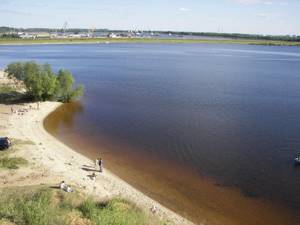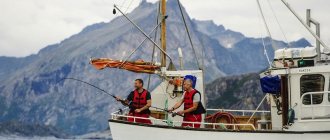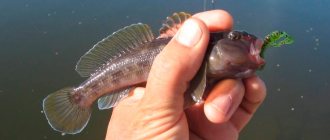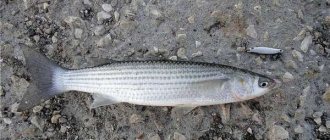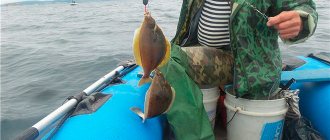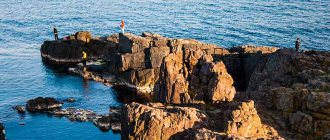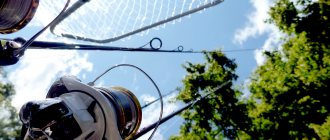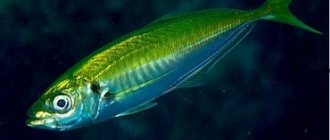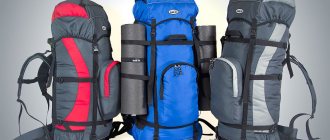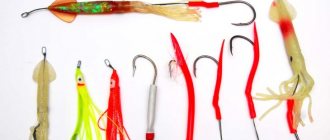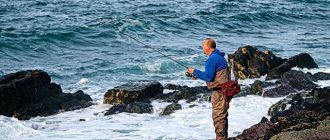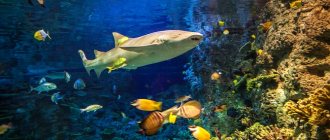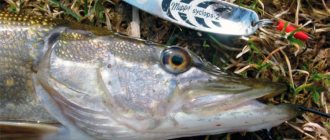| Folk heroes approve of this article. Therefore, they recommend continuing the text in the same spirit |
Landscape of the Gorky Sea. Photo by S. Kalinin Locks of the Gorky Reservoir Sea. Territory of SOL "Fora" Rally on the occasion of the flooding of the foundation pit of the Gorky hydroelectric power station
Gorky Reservoir, "Gorky Sea" (More-More)
- the main reservoir in the Nizhny Novgorod region. The Soviet press called it the Gorky Sea, and by the people, for short, “Grief-Sea”.
Area - 1590 km², volume - 8.71 km³, average depth - 3.65 m, maximum depth - 22 m, length - 427 km, width - up to 16 km.
The average ice thickness is 65 centimeters.
Background[edit]
Formed by the dam of the Nizhny Novgorod hydroelectric power station, filled in 1955-1957.
Located in Nizhny Novgorod, Ivanovo, Kostroma and Yaroslavl regions. In the upper section, water flooded only the floodplain and the first terrace. At the confluence of the Kostroma River, a vast lowland called the Kostroma expansion is flooded. Below the city of Yuryevets, the expanded lake-like part of the reservoir begins, in some places reaching a width of 14 km. High and picturesque banks are located in the area of the city of Plyos. Weekly flow regulation is carried out; fluctuations in water level up to 2 m. Created in the interests of energy and shipping. Widely used for recreation and fishing. On the banks there are cities: Gorodets, Puchezh, Chkalovsk, Yuryevets, Kineshma, Zavolzhye, Navoloki, Plyos, Kostroma, Yaroslavl, Tutaev, Rybinsk.
How to get to the Gorky Reservoir?
As you know, ponds are a favorite vacation spot for most people. And Gorkovskoe is no exception here. Proof of this is the numerous tourist centers and recreation centers, the advertisements of which are displayed on billboards along local roads. Many tents on the rivers flowing into the Volga.
There are many beautiful cities, both small and large, located on the banks of the reservoir. Among them are Rybinsk, Yaroslavl, Kostroma, Ples, Kineshma, Yuryevets, Puchezh, Chkalovsk, Gorodets. Each one is beautiful in its own way.
View of the Gorky Reservoir from the Yuryevets embankment
I think no one will have any difficulties getting to these cities. But not many people know the beautiful places of the Gorky Reservoir.
Traveling from Yaroslavl to Nizhny, along the route along the Nizhny Novgorod Sea, I wanted to share my selection of places where you can relax by the water. In principle, there are plenty of such places, but I would still like to mention a few.
Useful activities[edit]
Gore-Sea is a treasure trove of tourist centers and boarding houses. It’s a rare person living in the Nizhny Novgorod region (and not only) who has not rested on it. Gore-Sea is also a place of pilgrimage for barbecue makers, mattress makers, students, yachtsmen and simply slobs of all ranks. The shore, especially in the area of the Burevestnik boarding house, has become very shallow. There are rumors that they are planning to use a dredge soon and return it to its former depth. But for now, lying on the beach, you can observe a gratifying picture: hunched, burnt figures sadly wandering for kilometers through the water to swim.
Where is the Gorky Sea located?
The famous reservoir is located in several regions - Nizhny Novgorod, Ivanovo, Yaroslavl, Kostroma. On its banks there are large cities - Yaroslavl, Kineshma, Kostroma, Rybinsk.
Gorky Sea on the map
Gorky Sea how to get there
By personal car:
The main highways are through the Volga region, Nizhny Novgorod - Ivanovo or across the Borsky Bridge along the Nizhny Novgorod - Gorodets highway.
By public transport:
Buses along the route Nizhny Novgorod - Zavolzhye - Chkalovsk;
Train to Zavolzhye, then by local buses.
Fishing on the Gorky Reservoir[edit]
In 1956, the Volga was blocked at Gorodets by the dam of the Nizhny Novgorod Hydroelectric Power Station. A reservoir with an area of 160 thousand hectares was formed (its length is 430 km, average width 3.5 km). On the territory of the Nizhny Novgorod region there is a lower section with an area of 17 thousand hectares. This is a favorite place for fishermen. The reservoir stretches from the hydroelectric dam and beyond the borders of the region, further up to Yuryevets. Above this city, the reservoir retains the appearance of a deep river about 3 km wide. In the part near the dam it spread across the entire Volga valley to a width of 10-12 km. Depths in the flooded floodplain are 10-15 m, and in the flooded channel - up to 22 m. From Yuryevets to the Volga region, the right bank is high, steep, steep in places, the left bank is low, overgrown with forest. Along the valleys of the Volga tributaries, shallow bays protruding deeply into the shore were formed, up to 5 km wide at the mouth. The largest of them are along the Unzhe and Nemda rivers, and within the Nizhny Novgorod region - along Trotsa and South.
The hydrochemical regime of the reservoir is favorable for fish. Only in those places where extensive peat bogs were flooded in the floodplain do frost phenomena sometimes occur in winter, although they are not widespread. There is almost no current in the dam area. Of greater importance for fish is the wind movement of water and its agitation.
A very important factor in the life of fish is the fluctuation of water levels in winter, which makes reservoirs very different from natural reservoirs. The hydroelectric power station operates in constant mode, which is due to the need for sanitary releases. The water reserve accumulated in the spring is used up for the next flood. After completion of navigation, the drawdown accelerates: in the period from December to March-April there is a significant decrease (sometimes up to 2 m) from the normal retaining horizon. At the same time, the shallow waters are drained, the ice collapses, lies on the ground and cuts off large areas from the reservoir. This is where the freeze occurs. Sometimes a lot of fish die under the settled ice, the ground freezes, causing the rhizomes of coastal plants to die. Vegetation along the banks of reservoirs develops poorly.
In the spring, in April-May, the reservoir is filled. At this time, the level fluctuation does not exceed 20-40 cm, but this also has a detrimental effect on the fish, a lot of laid eggs disappear either from drying out or from abnormal flooding. Reproduction, that is, the reproduction of fish that lay eggs on coastal vegetation (many carp, pike, etc.), is difficult here. This has a negative impact on fish stocks.
The reservoir is cleared of ice later than the rivers, usually at the beginning of May, and only in warm years - somewhat earlier, at the end of April. First, the ice melts in the open reaches, and only then in the bays.
As already mentioned, the flow in the reservoir, especially in the part near the dam, is very slow. In terms of its regime, this body of water most closely resembles a low-flow lake. River fish that love currents (podust, chub, sterlet, etc.) moved up or into tributaries, and their numbers fell.
Migratory fish - lamprey, herring, sturgeon - have ceased to be found. But the fish for which the lake regime turned out to be suitable felt great in the first years of the reservoir’s existence. In 1956-1957 Vast areas of fertile floodplains, covered with shrubs and meadow vegetation, were flooded. Conditions for laying eggs turned out to be very favorable. Numerous juveniles born during these years found abundant food, as all aquatic organisms, including those that fish feed on, developed rapidly.
The number of such fish. like a pike. bream. silver bream, roach, perch, etc., has increased sharply. They all grew well. But the period of intensive development of aquatic organisms was short-lived. Already in the 3-4th year after the flooding, the flooded vegetation began to die off, spawning areas decreased, conditions for fish reproduction worsened, and an unstable level regime began to have an effect. In addition, in a young reservoir, such as a reservoir, productive silt has not yet accumulated at the bottom. Therefore, the number of bottom animals living in it is small. Many fish that feed on them lack food and therefore grow slowly. Bream, for example, instead of bloodworms begins to eat planktonic crustaceans, which is unusual for it and for which it is poorly adapted. Something similar happens with other fish.
The most numerous species in the reservoir are perch, ruffe, roach, sopa, bleak, sabrefish, and the most valuable commercial fish are bream. Not much pike perch. There is still little blue blue in our reservoir, which is abundant in some southern Volga and Dnieper reservoirs. Burbot has also become rare. But new fish appeared. These are Belozersk vendace and lake smelt, spreading throughout the Upper Volga. Occasionally, eels are caught, penetrating the Volga from Lake Seliger.
To increase the productivity of the reservoir, valuable food organisms were released into it - gammarid crustaceans, and fish - freshwater Siberian sturgeon fry and whitefish peled larvae. All the settlers have settled down, but are still small in number. Peled, however, is sometimes caught with a fishing rod and is known to fishermen. Fishing on the reservoir is productive. They fish here both in winter and summer. The most famous places among amateur fishermen are the Trotse and Sanakhta rivers. Fishing is good on Micha, Mocha, and especially on Unzha in the Ivanovo region. In autumn and winter, perch and ruffe are caught, and in March large roach bite, reaching 25 and even 35 cm in length and up to 1 kg in weight.
Recreation and fishing centers on the Gorky Sea
Gore-Sea is a favorite vacation spot for local residents. They came here at least once in their lives. Fishing, barbecues, and active recreation on the Gorky Sea attract people here every year. Dozens of recreation centers, clubs and hotels offer their services. They offer comfortable housing, use of boats, fishing equipment, and delicious food. Employees of recreation centers specialize in fishing and hunting services, and active recreation.
Recreation center Ermak
Country club "Ermak" is located in a beautiful place in the Nizhny Novgorod region, far from the noisy city. Sokolsky district is one of the recognized environmentally friendly places. The territory has an infrastructure suitable for any guest, from the youngest to seasoned nature lovers. The range of services is wide - fishing on the Gorky Sea in the bay of the reservoir in stocked areas, bicycles, tennis, billiards, a sauna with a bathhouse, a children's play club. In winter, guests ride motorized dogs with drags, snowmobiles, skis or ice skates. You can ride a pleasure boat, learn to ride a cheesecake or a banana. The mini-zoo will delight little guests with familiarity with domestic and wild animals. Cheerful groups of friends enjoy playing quests on ATVs and the game Mafia. The club's territory is surrounded by greenery and flowers among a birch grove. They say about the club: “A soulful place.” You can choose different rooms for accommodation: from standard to luxury. Athletes and juniors are frequent guests at the hotel. Any festive events, special anniversaries, weddings are a common occurrence at the club, because the service here is at the highest level.
Recreation center Demidovka
The Demidovka recreation center is located in the Ivanovo region on the sandy shore of the Gorky Reservoir. This is a cozy place for a secluded holiday or in the company of like-minded people - fishing enthusiasts. An experienced guide will take you to a feeding spot where fishing will definitely be successful. A fishing navigator is available for guests' use. The Gorky Sea is home to pike perch, bersh, perch, bream, roach, and carp. You can fish from the shore or from a boat. Fishermen are welcome to visit both winter and summer. Snowmobiles will come in handy for underwater fishing enthusiasts. Comfortable accommodation in separate houses with a bathhouse and a kitchen will make your stay enjoyable and healthy. The catch can be stored in freezers or cooked on the grill or in a smokehouse. Hunters will find something to do in the local forests - game, hares, and foxes are found here.
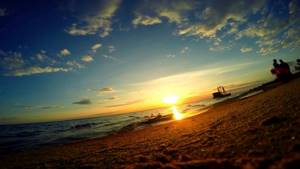
Recreation center Zeleny Mys
The fishing base "Cape Verde" is located in the Ivanovo region on the shores of the Gorky Sea. A beautiful view of the Volga opens from the high bank, surrounded by pine trees. Professional huntsmen will share the secrets of fishing, tell you what gear to choose, what kind of fish to catch with what kind of bait. A successful catch of carp, bream, roach, ide or pike is guaranteed. A small recreation center has the ability to provide personalized service to its guests. No one will distract them from doing what they love or relaxing. Trophies can be stored in the freezer or in a smoker. At the base there is a barbecue and fire pit. A cozy home and delicious food from an experienced chef will leave a good impression on your guests.
Recreation center Laguna south
This is a luxury base on an area of six hectares. It is located near Nizhny Novgorod at the mouth of the navigable river Yug, which flows into the Gorky Sea. Guests arrive by personal transport; there is a convenient pier at the base. You can fish from the shore or rent a boat. Base employees will provide any equipment for use. Fresh air and separate wooden cottages will delight visitors and give them new energy. There are different options for cottages: near the water, near the forest. Living conditions will not create problems for guests. Active recreation is spent in the fresh air - laser tag, skiing, hockey, football, volleyball, horseback riding. After a busy day, you can relax in the bath complex, play billiards, a shooting range, or go to a barbecue. In summer, there is an equipped beach with sun loungers. Children's holidays will be unforgettable - a mini-zoo, a children's playground, entertainment programs. Corporate events, weddings, and discos are often held at the recreation center in its well-groomed grounds.
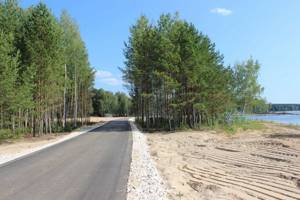
Recreation center Volzhskoye Compound
A small hotel in a wooden cottage stands on the shores of the Gorky Sea on the middle Volga. Ecological recreation - this is what is said about this place. The guest house is built surrounded by forests. From the balconies you can see the enchanting view of the Volga River. Fishing lovers will be able to practice their hobby all year round. Ice fishing will be interesting for both beginners and professional fishermen. In summer you can fish from a boat or from the shore. Almost all types of freshwater fish are found here - bream, pike perch, pike, carp, catfish, crucian carp. In the spring, hunters go to catch waterfowl and small animals in the forests. Elks, foxes, wild boars and even bears are found in these places. The huntsman will help organize the hunt and keep you company during the hunt. The whole family will be able to ski and sled in winter and play active games in summer, go to the forest to pick mushrooms and berries, there are a huge number of them here. A comfortable stay is ensured by the homely atmosphere of the guest house. In the evening you can play billiards, watch TV by the fireplace, or sing karaoke.
Gorky Sea in natural history[edit]
The Gorky Sea, the third upstream in the Volga cascade of reservoirs, was formed in 1955, it spread widely over the meadow lands of the Upper Volga. Flooding of such valuable lands is a negative phenomenon when constructing hydroelectric power stations on lowland rivers. Although it is the average size of the Volga seas, its area is large - about 1600 square kilometers.
In the dam on the right bank of the Volga there is a hydroelectric power station building, and on the left bank there are two rows, or, as they say, two threads, of two-chamber locks, separated by an intermediate water space - the pool, where the Gorodets shipyard is located. This allows ships heading up and down the Volga to pass through the locks at the same time. With a sharp decrease in the flow speed in the reservoir compared to the previous speed in the river (it decreased several times - from 0.7-1.5 to 0.2-0.4 m/sec), the duration of the freeze-up increased significantly: now the reservoir freezes over a week earlier (around November 20) and a week and a half later it opens (at the end of April). The average ice thickness is 65 centimeters (maximum up to 1 m).
Despite its large area, the Gorky Sea affects the climate of the adjacent territory no further than half a kilometer from the shores, increasing air humidity and causing light breezes that moderate the midday heat in hot weather. The left shore of the sea, sometimes completely sloping with sandbanks, sometimes steep, washed away, is almost entirely covered with forest, either purely pine or mixed with birch copses.
Geography of the Gorky region. Trube L.L.
Nizhny Novgorod Gorky Sea
Located on the Volga River, on the territory of several regions. The size of the reservoir is so large that it is called the Gorky Sea. There are many similar reservoirs on the Volga, they form a whole cascade. The Volga cascade of reservoirs is recognized as the largest transport, water and energy system in Europe. The Nizhny Novgorod Gorky Sea is an artificial reservoir created by man. The sea is blocked on both sides by dams at the Gorky hydroelectric station. More than 60 years ago the reservoir was filled with water. Its average depth is about four meters.
